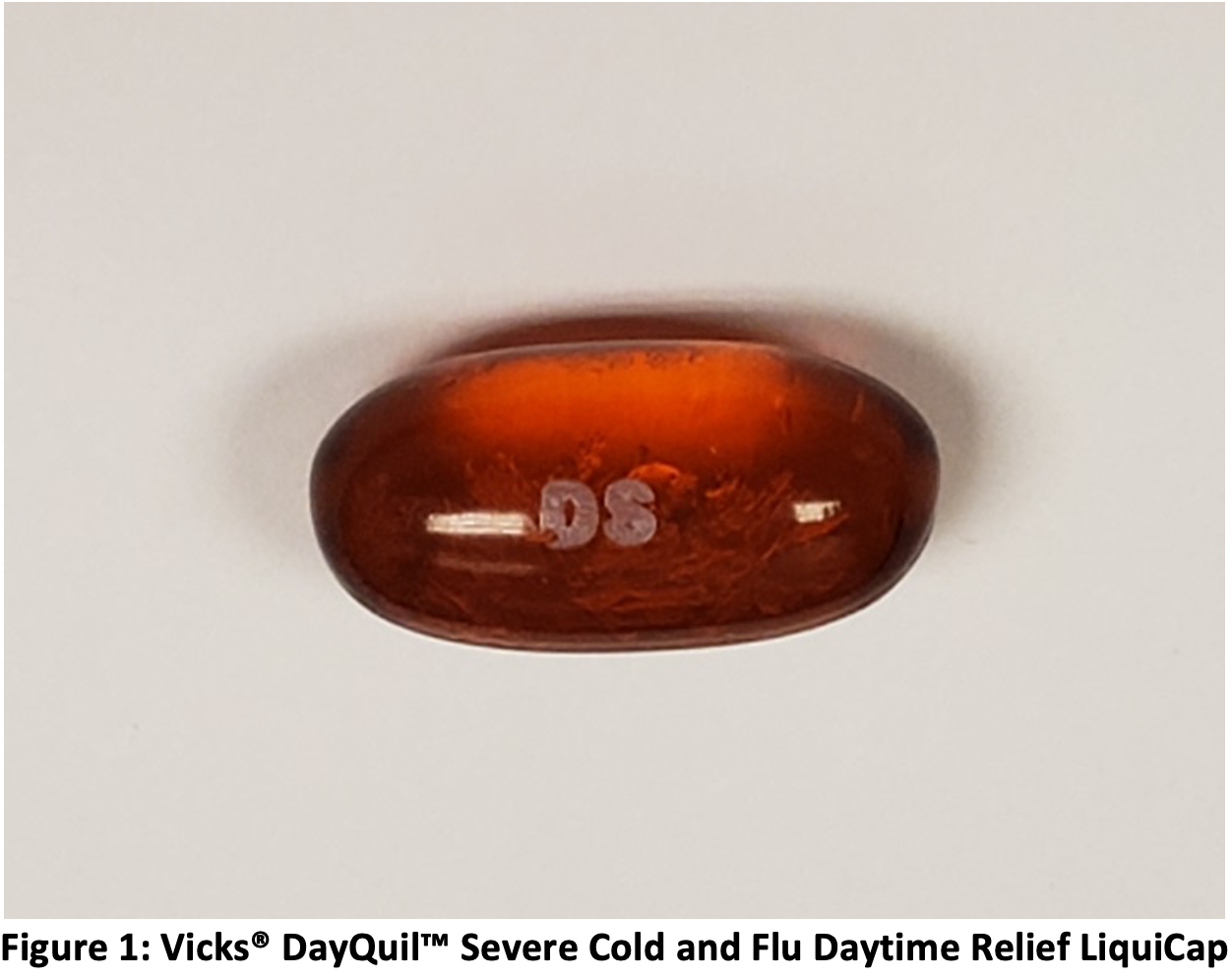Crystals were observed growing within a DayQuil Liquicap. This blog post describes the approach taken to isolate and identify the unknown crystals.
Vicks® DayQuil™ Severe Cold & Flu provides an over the counter non-drowsy, daytime relief for common cold and flu symptoms. DayQuil™ Severe is formulated to relieve or reduce headache, fever, sore throat, nasal decongestion, cough, and minor pain. Vicks® DayQuil™ Severe LiquiCap gel capsules contain active ingredients: acetaminophen 325 mg, dextromethorphan hydrobromider 10 mg, guaifenesin 200 mg, phenylephrine hydrochloride 5 mg, and inactive: ammonium hydroxide, FD&C blue No. 1, FD&C red No. 40, gelatin, glycerin, polyethylene glycol, povidone, propylene glycol, purified water, shellac, simethicone, sorbitol sorbitan solution, and titanium dioxide, Figure 1.

Solid crystalline material could be observed within the Vicks® DayQuil™ Severe LiquiCap. A closer examination was observed using stereomicroscopy, see Figure 2.

The LiquiCap was cut open to drain the liquid and expose the solid crystalline material as illustrated in the photomicrograph in Figure 3.

Vibrational microspectroscopy was used to analyze the solid-state chemistry of the crystalline substance. The infrared microprobe analysis identified the substance as acetaminophen, which was compared to an internal spectral library spectrum, Figure 4.

Raman microspectroscopy, a complementary technique, also identified the substance to be acetaminophen, Figure 5.

We have demonstrated that microscopy, infrared microspectroscopy and Raman microspectroscopy can be used to perform qualitative analysis of unknown crystalline materials in complex formulations. These microspectroscopy techniques are complementary and the results show that these systems are useful tools for determining the identification of unknown solid-state chemical compounds.
